The German cockroach (Blattella germanica) is the roach that exterminators are most often called upon to control in the United Arab Emirates.
Adult German cockroaches average about five-eighths of an inch long. They have long antennae which they use to detect chemicals, moisture, air currents, and probably sound waves and vibrations in their environment.
German cockroaches prefer warm, moist areas, and are frequently found in kitchens and bathrooms. Thousands of German cockroaches can occupy a single kitchen.
Biology and pest status:
Blattella germanica occurs widely in human buildings, but is particularly associated with restaurants, food processing facilities, hotels, and institutional establishments such as offices, Schools, Hospitals. In cold climates, they occur only near human dwellings, because they cannot survive severe cold. However, even though they would soon die in the outdoors on their own, German cockroaches have been found as inquilines ("tenants") of human buildings.
Previously thought to be a native of Europe, the German cockroach later was considered to have emerged from the region of Ethiopia in Northeast Africa, but more recent evidence suggests that it actually originated in Southeast Asia. Whatever the truth of the matter, the cockroach's sensitivity to cold might reflect its origin from such warm climates, and its spread as a domiciliary pest since ancient times has resulted from incidental human transport and shelter. The species now is cosmopolitan in distribution, occurring as household pets on all continents except Antarctica, and on many major islands as well. It accordingly has been given various names in the cultures of many regions. For example, although it is widely known as the "German cockroach" in English-speaking countries, in Germany in turn, it is known as the Russian roach.
Though nocturnal, the German cockroach occasionally appears by day, especially if the population is crowded or has been disturbed. However, sightings are most frequent of an evening, when someone suddenly brings a light into a room deserted after dark, such as a kitchen where they have been scavenging. When excited or frightened, the species emits an unpleasant odor.
Diet:
German cockroaches are omnivorous scavengers. They are attracted particularly to meats, starches, sugars and fatty foods. Where there is a shortage of foodstuffs, they may eat household items such as soap, glue and toothpaste. In famine conditions they turn cannibalistic, chewing at each other's wings and legs.
Reproduction:
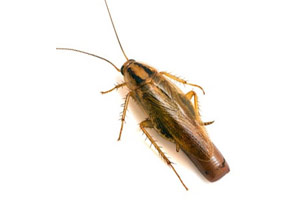 |
The German cockroach reproduces faster than any other residential cockroach, growing from egg to reproductive adult in approximately 50 – 60 days. Once fertilized, a female German cockroach develops an ootheca in her abdomen. The abdomen swells as her eggs develop, until the translucent tip of the ootheca begins to protrude from the end of her abdomen, and by that time the eggs inside are fully sized. |
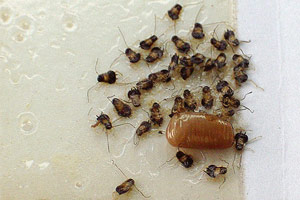 |
The ootheca, at first translucent, soon turns white and then within a few hours it turns pink, progressively darkening until, some 48 hours later, it attains the dark red-brown of the shell of a chestnut. The ootheca has a keel-like ridge along the line where the young emerge, and curls slightly towards that edge as it completes its maturation. A small percentage of the nymphs may hatch while the ootheca is still attached to the female, but the majority emerges some 24 hours after it has detached from the female's body |
 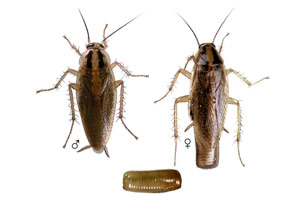 |
The newly hatched 3mm-long black nymphs then progress through six or seven instars before becoming sexually mature, but ecdysis is such a hazardous process that nearly half the nymphs die of natural causes before reaching adulthood. Molted skins and dead nymphs are soon eaten by living nymphs present at the time of molting. |
Control
The German cockroach is very successful at establishing an ecological niche in buildings, and is resilient in the face of many pest control measures. Reasons include:
- Lack of natural predators in a human habitat
- Prolific reproduction
- Short reproductive cycle
- The ability to hide in very small refuges
- Sexual maturity attained within several weeks, and
- Adaptation to and immunity from chemical pesticides
German cockroaches are thigmotactic, meaning that they prefer confined spaces, and they are small compared to other pest species, so they can hide within small cracks and crevices that are easy to overlook.
There by evading humans and their eradication efforts. Conversely, the seasoned pest controller is alert for cracks and crevices where it is likely to be profitable to place baits or spray surfaces.
To be effective control measures must be comprehensive, sustained and systematic; survival of just a few eggs is quite enough to regenerate a nearly exterminated pest population within a few generations, and re-colonization from surrounding populations often is very rapid too.
 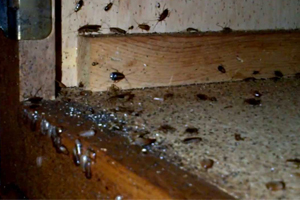 |
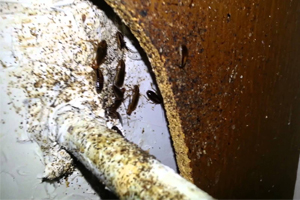  |
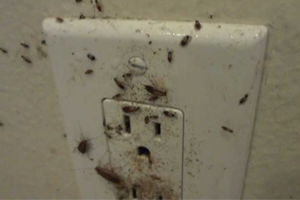  |
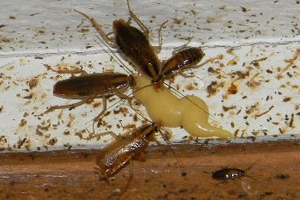  |
Another problem in controlling German cockroaches is the nature of their population behavior. Though they are not social and practice no organized maternal care, females carry oothecae of 18-50 eggs (average about 32) during incubation until just before hatching, instead of dropping them as most other species of cockroaches do. This protects the eggs from certain classes of predation. Then, after hatching, nymphs largely survive by consuming excretions and molts from adults, thereby establishing their own internal microbial populations and avoiding contact with most insecticidal surface treatments and baits. One effective control is insect growth regulators (IGRs; Insect Growth Regulator), which act by preventing molting and thus prevent maturation of the various instars. Caulking baseboards and around pipes may prevent the travel of adults from one apartment to another within a building.
Ideal places where German Roaches Hide and Breed:
 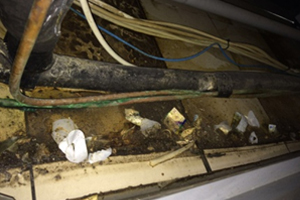 |
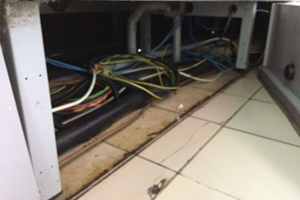  |
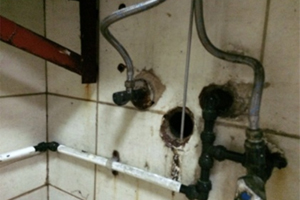  |
 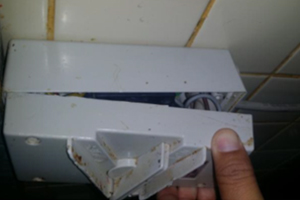 |
 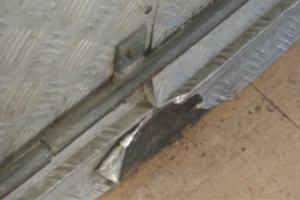 |
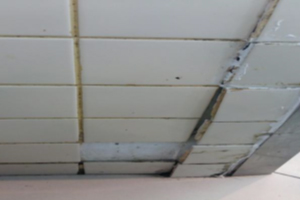  |
Contact your pest management professional and request an inspection, to prepare a comprehensive pest management plan that will effectively and efficiently deal with the specific pest problem.
INNOVETIVE DEVICE
ASURE 100% ROACHES ERADICATION
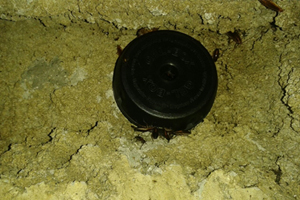  |
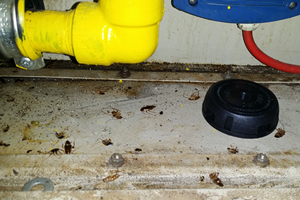  |

